Imaging Projects
In this blog, I will share the results of all of my imaging projects. The newest will be at the top and the oldest will be further down the stack. Going back in time here is interesting - some of my early stuff was pretty rough - but I did not see it that way at the time - I was thrilled to get anything back that looked like an image! Hopefully, you will see how my work has progressed with time!
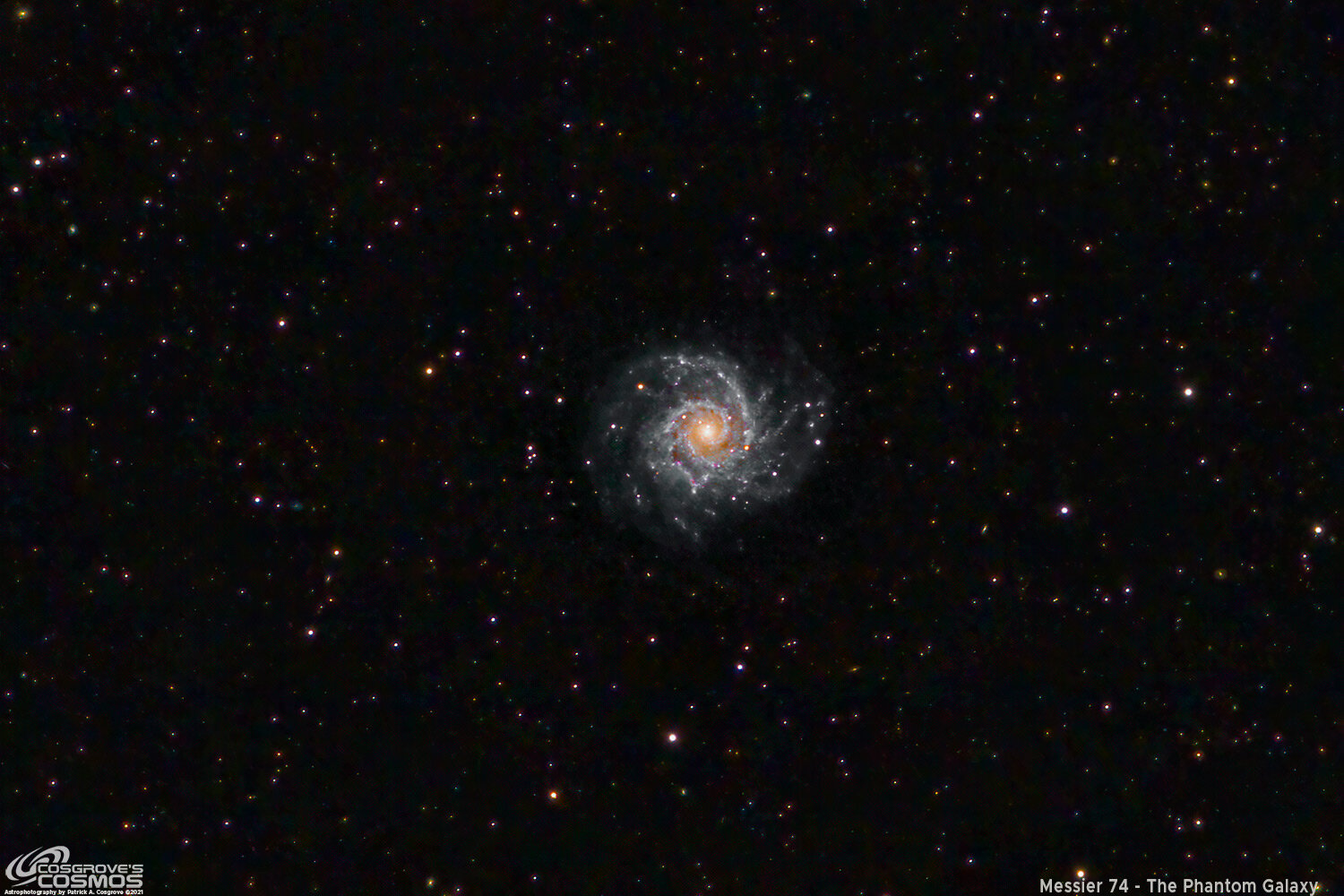
Messier 74 - The Phantom Galaxy
Messier 81, also known as NGC 3031 and Bode's Galaxy, is a beautiful spiral galaxy located 12 Million light-years away in the constellation Ursa Major. This post tells the story of this capture -which consists of 9.9 hours of integration using the ZWO ASI294MC-Pro and the William Optics 132mm FLT APO Platform.
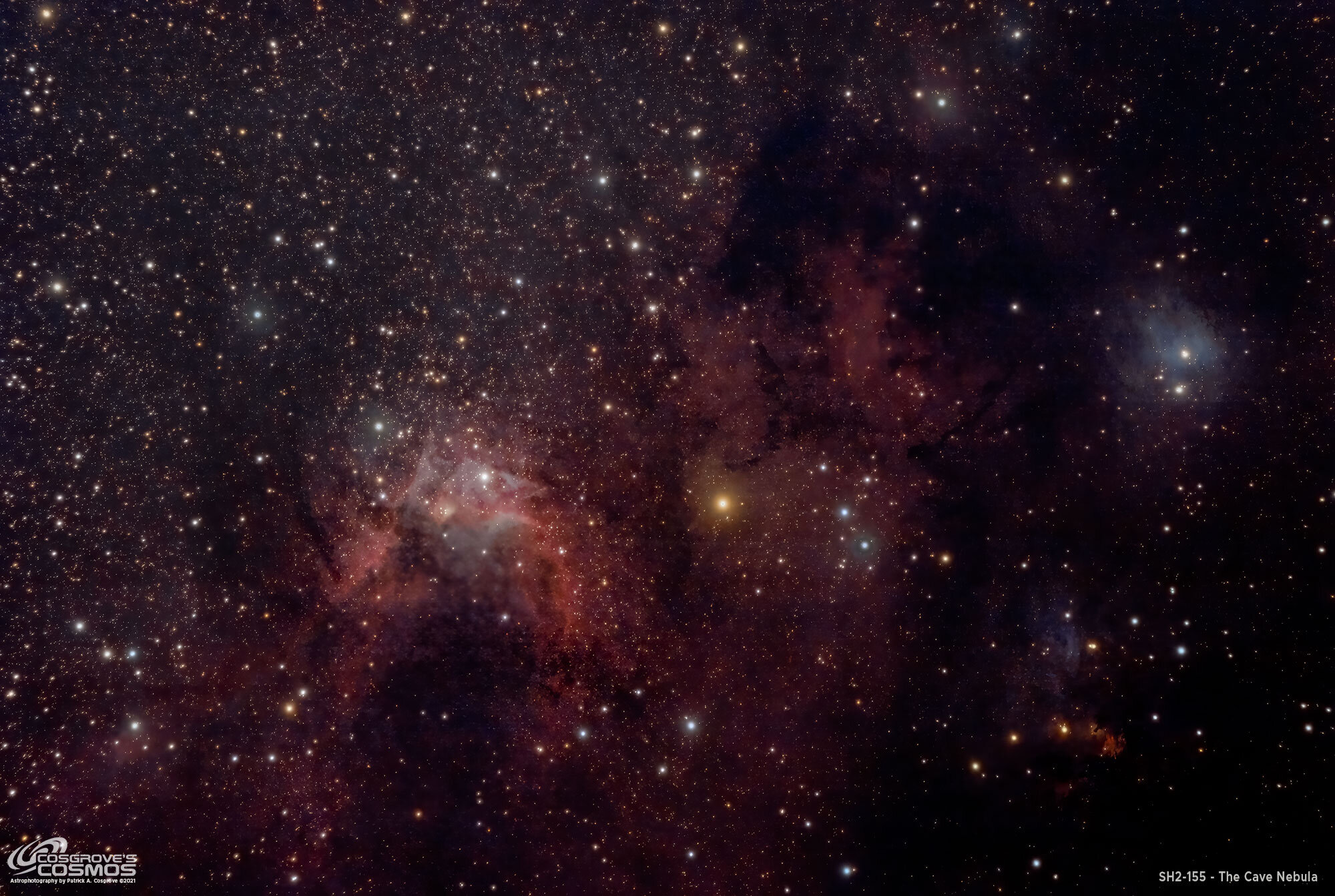
SH2-155 - The Cave Nebula
SH2-155 - The Cave Nebula - also known as Caldwell 9, is a diffuse nebula found in the constellation Cepheus. It is actually a part of a much larger complex of nebulae n the region which includes the emission, reflection, and dark nebulae. The designation indicates that this part of the Sharpless Catalog of emission nebulae which are located north of the declination -27 degrees. Sh2-155 is located 2400 light-years away and is an ionized HII region with evidence of star formation activity.
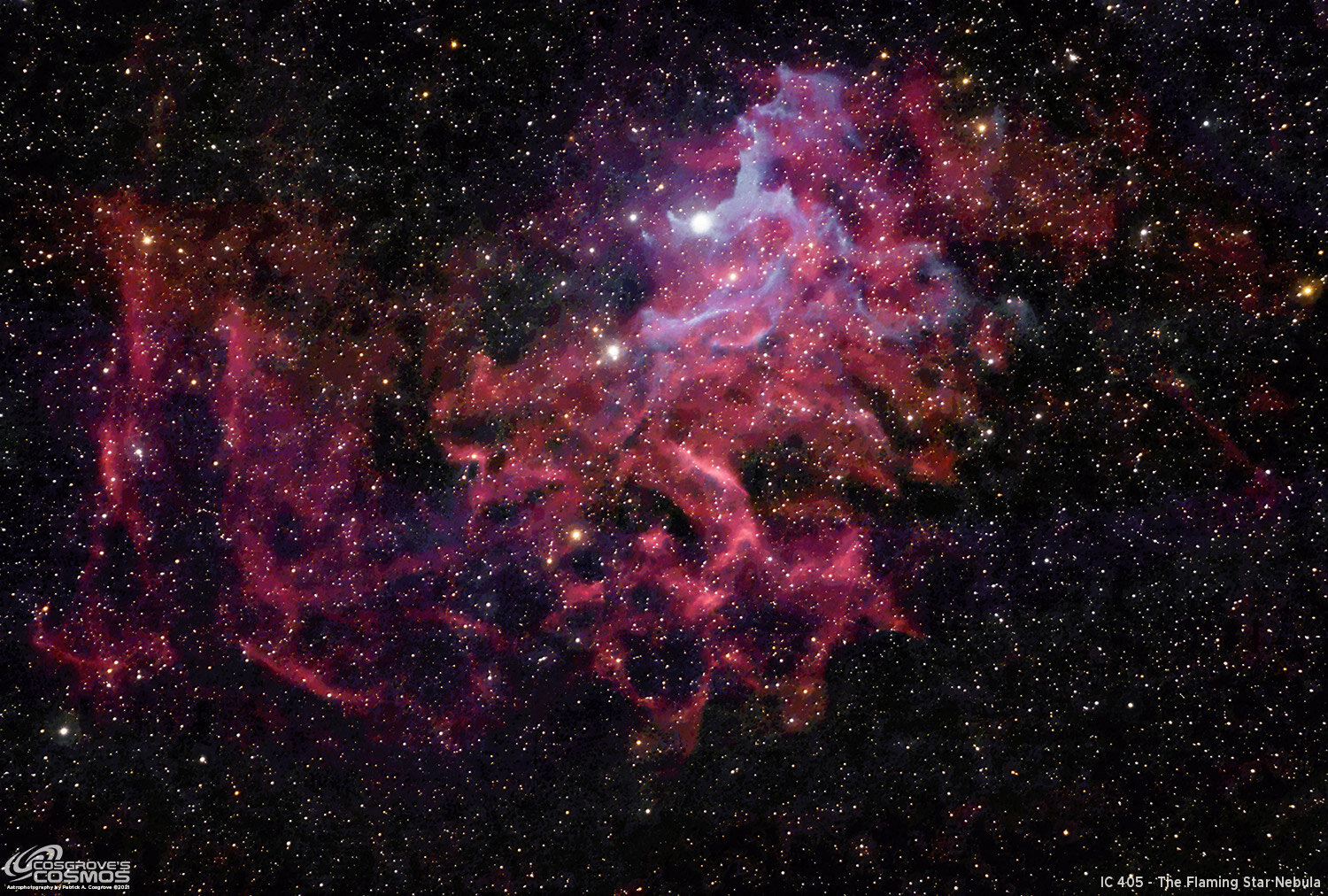
IC 405 - The Flaming Star Nebula
IC 405 - The Flaming Star Nebula, also known as Caldwell 31, is a nebula in the constellation Auriga surrounding the bright blue irregular variable star AE Aurigae. This nebula is located about 1500 light-years away and is about 5 light-years across. The red portions are from emission nebulae, while the bluer portions are reflection nebulae, reflecting the light of AE Aurigae.
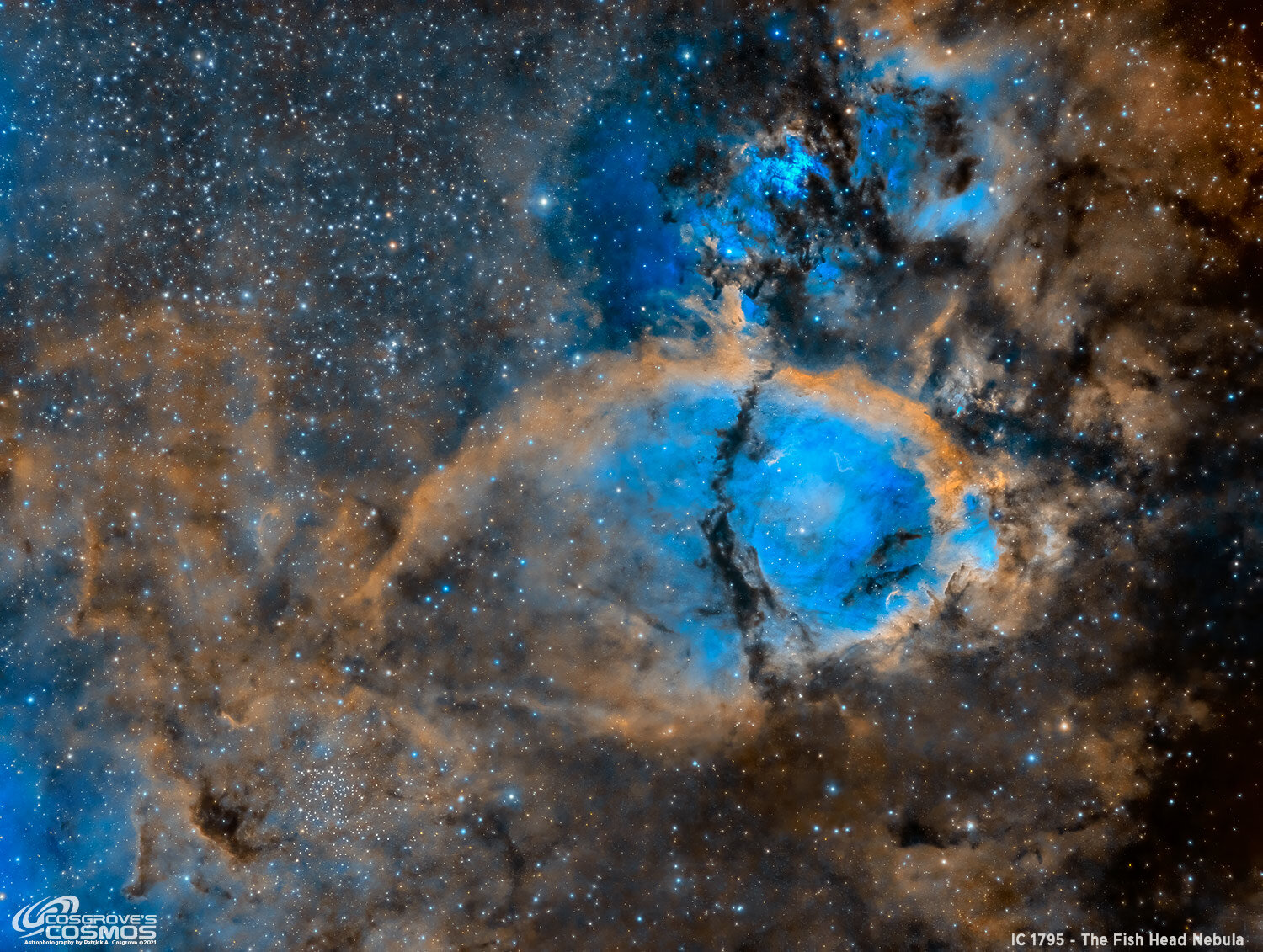
IC 1795 - The Fish Head Nebula in SHO
IC 1795, also know as the Fish Head Nebula, is an area of new star formation with glowing gas and dust, in the constellation of Cassiopeia. It is actually a portion of the larger Heart Nebula complex (IC 1805) that is located about 6000 light-years from earth. Since my scope cannot fit the entire Heart nebula into its field of view, I opted to frame just the fish head portion of the nebula. This was to be shot with my Mono camera and narrowband filters so that I could get the Hubble Palette colors that I am quite fond of.
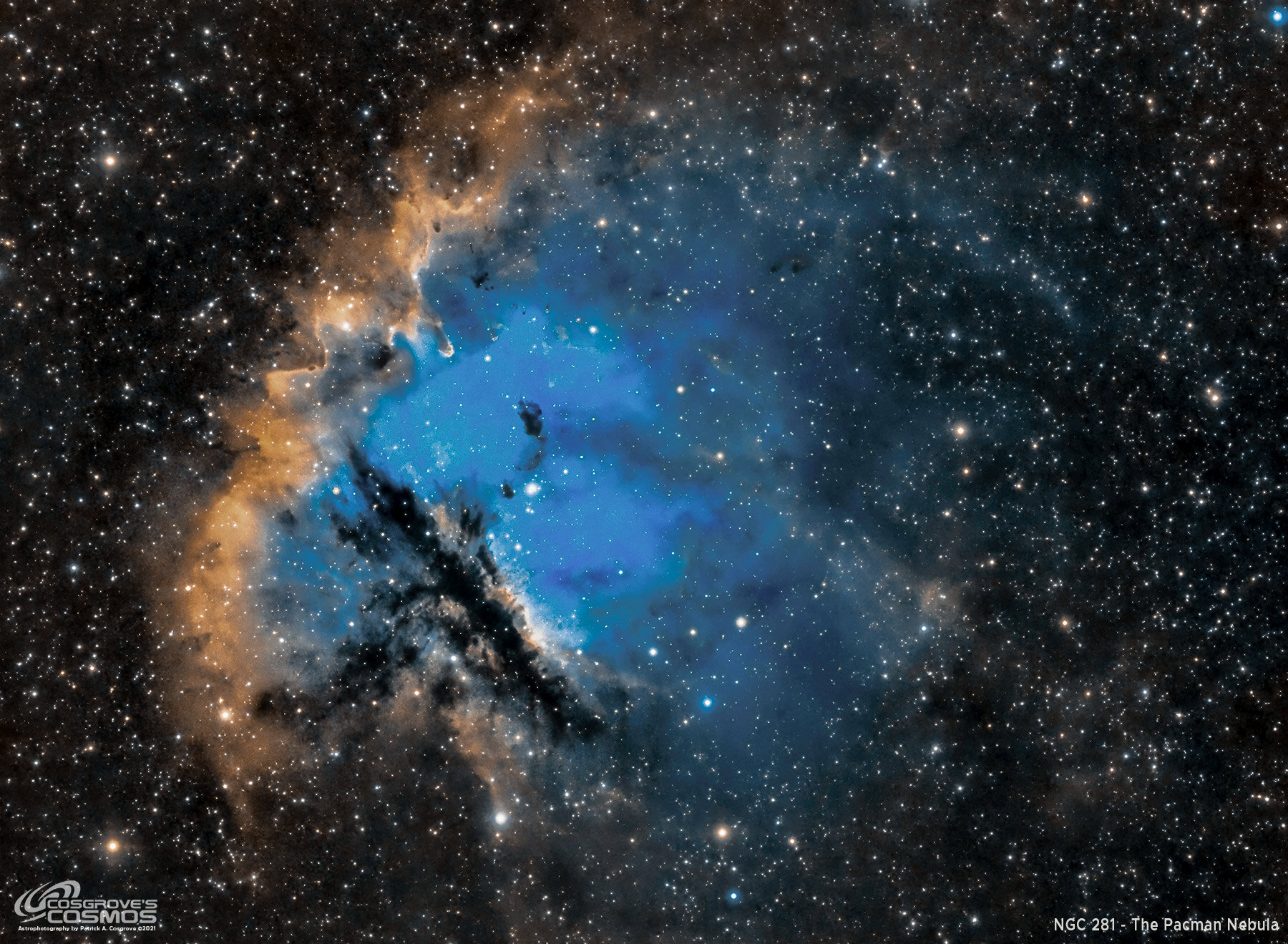
NGC 281 - The Pacman Nebula in the Hubble Palette
NGC 281 - The Pacman Nebula. Also known as IC 11 and Sh2-18,4 this is a bright emission nebula located 9500 light-years away in the constellation of Cassiopeia and is part of the Perseus arm of our own Milky Way galaxy. Captured with a mono camera on my Astro-Physics 130mm Platform.

Messier 1 - The Crab Nebula with an SHO/RGB Blend
Messier 1 - The Crab Nebula. Also, known as NGC 1952 and Taurus A. Now, THIS is a pretty cool object! This is the remains of a star that went Supernova and was seen as a bright daytime star back in 1054 by Chinese Astronomers. It was discovered by English astronomer John Bevis in 1731. It was also independently discovered by Charles Messier in 1758 when he was trying to find the return of Halley's Comet.
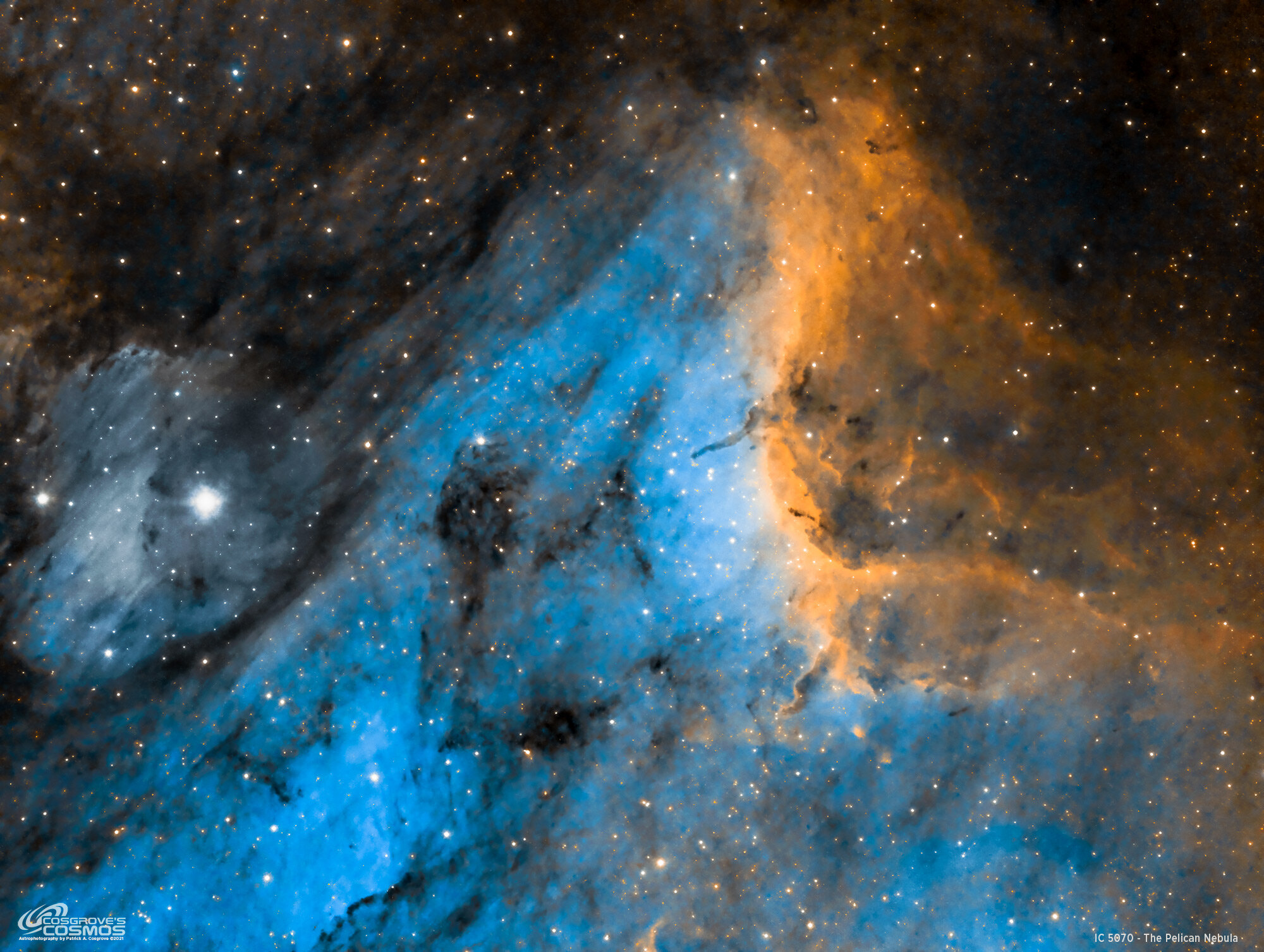
IC 5070 - The Pelican Nebula in SHO
IC 5070 - The Pelican Nebula. This rich region of gas and dust is located 1800 light-years away in the constellation of Cygnus, the Swan. It is separated from the North American Nebula by a dark region of dust. The Pelican Nebula is very active in star formation and the growing collection of hot new stars being created there are slowly transforming cold gasses to hot gases that are ionized.
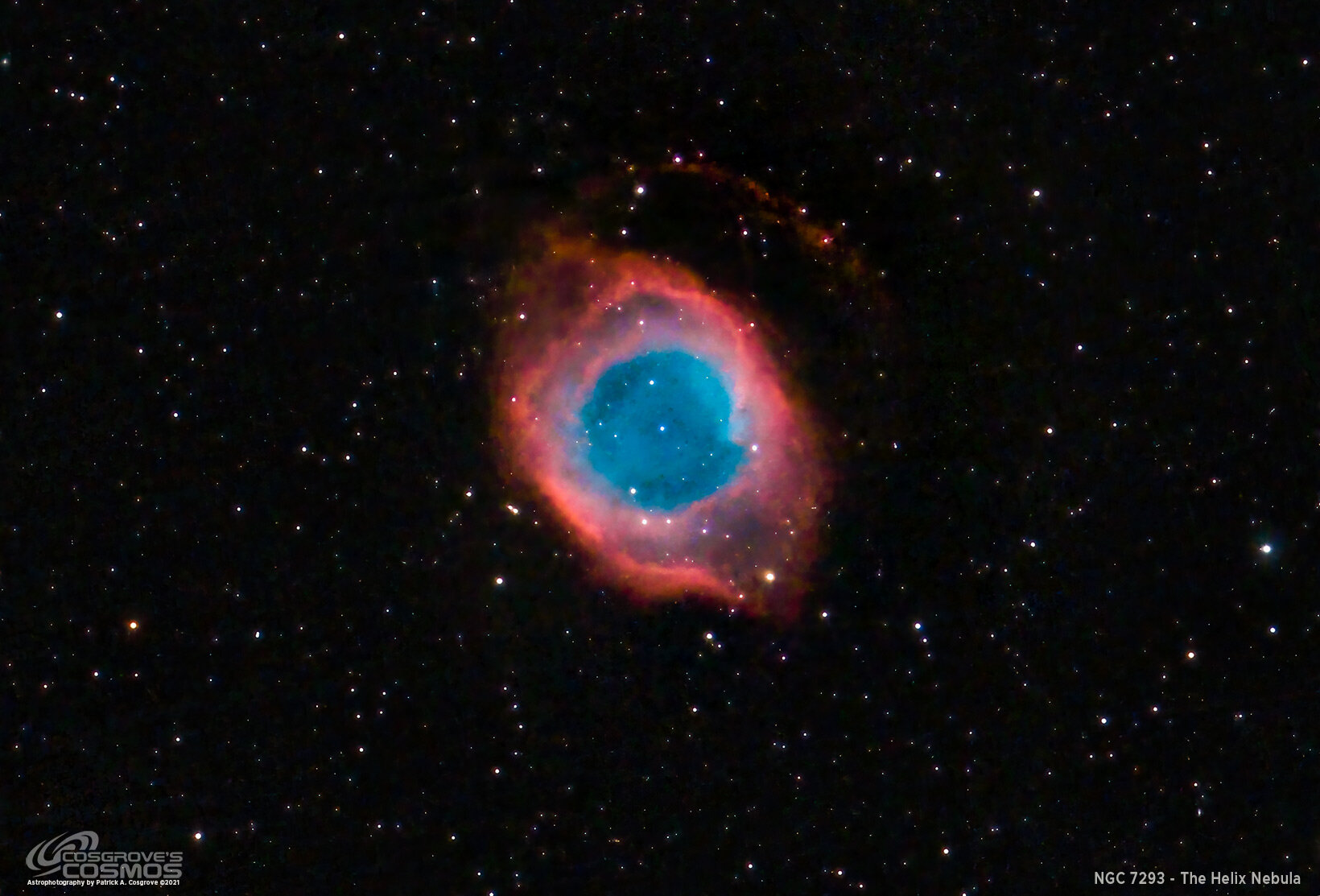
NGC 7293 - The Helix Nebula
NGC 7293, better known as the Helix Nebula, Caldwell 63 and in pop culture as "The Eye of God" or the "Eye of Sauron" - is a planetary nebula located in 655 light years away in the Constellation Aquarius. Planetary Nebulae are formed when an intermediate to low-mass star sheds its outer layers as it reaches the end of its life. The Helix Nebula is one of the closest planetary nebulas to the Earth, is estimated to be about 2.5 light years in diameter.

NGC 7635 - The Bubble Nebula in SHO
NGC7635 - The Bubble Nebula - A narrowband image in the Hubble Palette. Also known as Sharpless 162 and Caldwell 11. The Bubble Nebula can be found in the constellation Cassiopeia, not far from the Open Cluster Messier 52. This area is a rich HII region and the bubble itself was created by stellar winds from a massive hot blue Wolf-Rayet star, AO 20575, that shed its material about 300,000 years ago to form the bubble. This star is 44 times larger than our sun. The Bubble itself is found in a massive molecular cloud that contains the expansion of the bubble and is excited by the same star, causing it to glow as well.
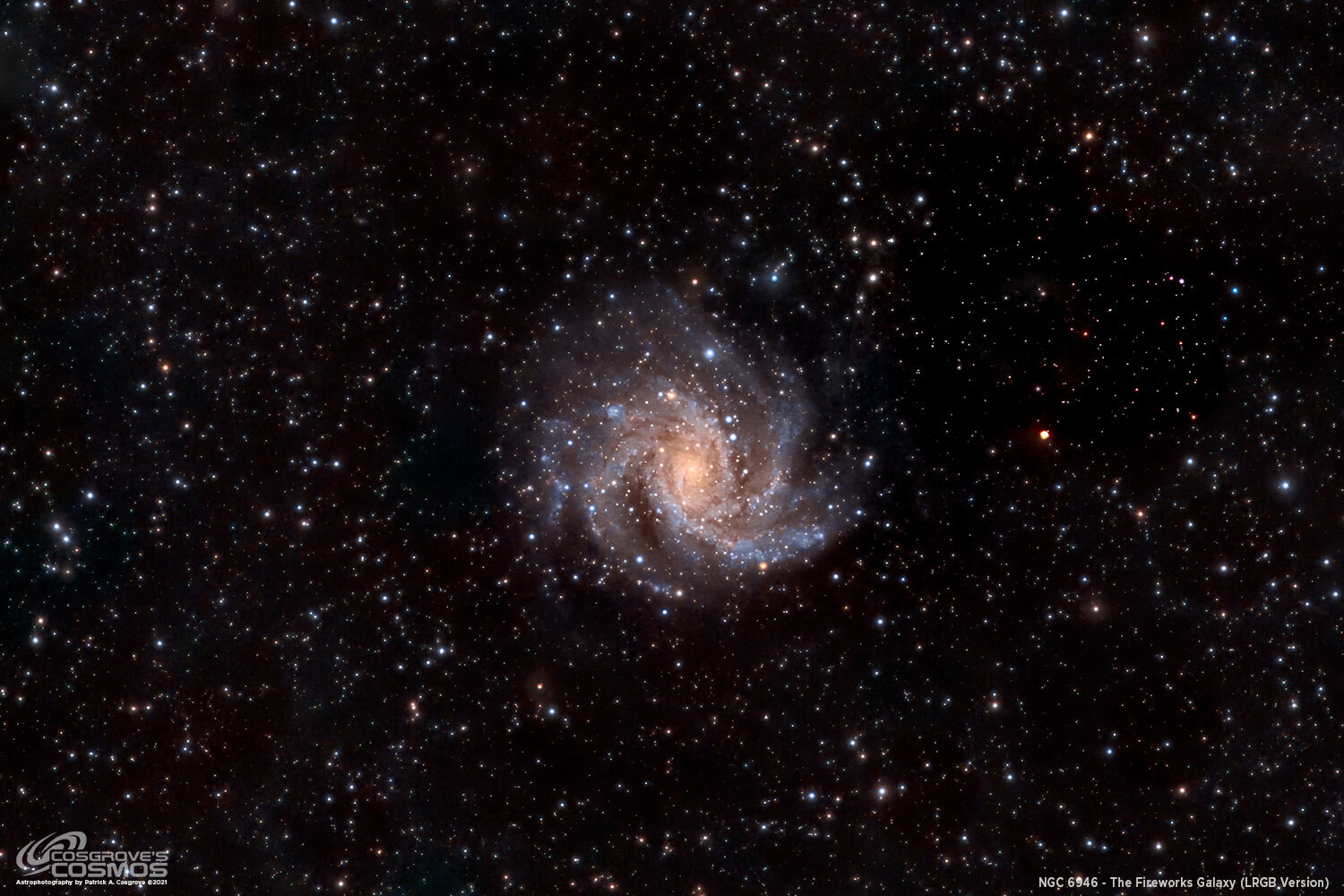
NGC 6946 - The Fireworks Galaxy - Mono LRGB Version
NGC 6946 - The Mono Camera Version.
Known as the Fireworks Galaxy and Caldwell 12, this object is a face-on spiral galaxy on the boundary between Cepheus and Cygnus' constellations. It is located 25.2 Million Light years away and is about 1/3 of our own Milkyway Galaxy size. Another image taken simultaneously was done on a OSC camera so that the two images could be compared.
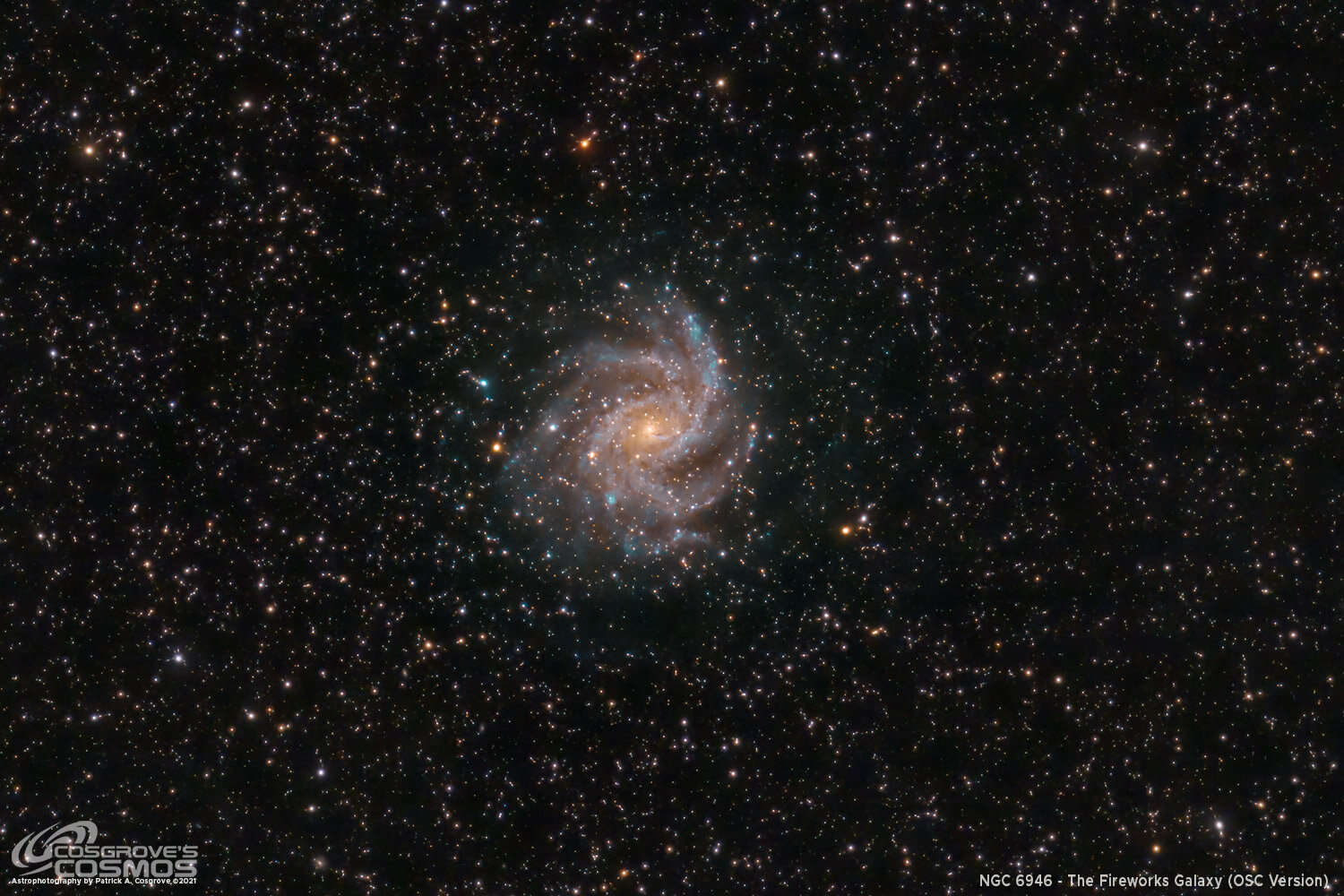
NGC 6946 - The Fireworks Galaxy - OSC Version
NGC6946 - The OSC Camera Version, Known as the Fireworks Galaxy and Caldwell 12, is a face-on spiral galaxy on the boundary between Cepheus and Cygnus' constellations. It is located 25.2 Million Light years away and is about 1/3 of our own Milkyway Galaxy size. Another image taken simultaneously was done on a mono camera so that the two images could be compared.
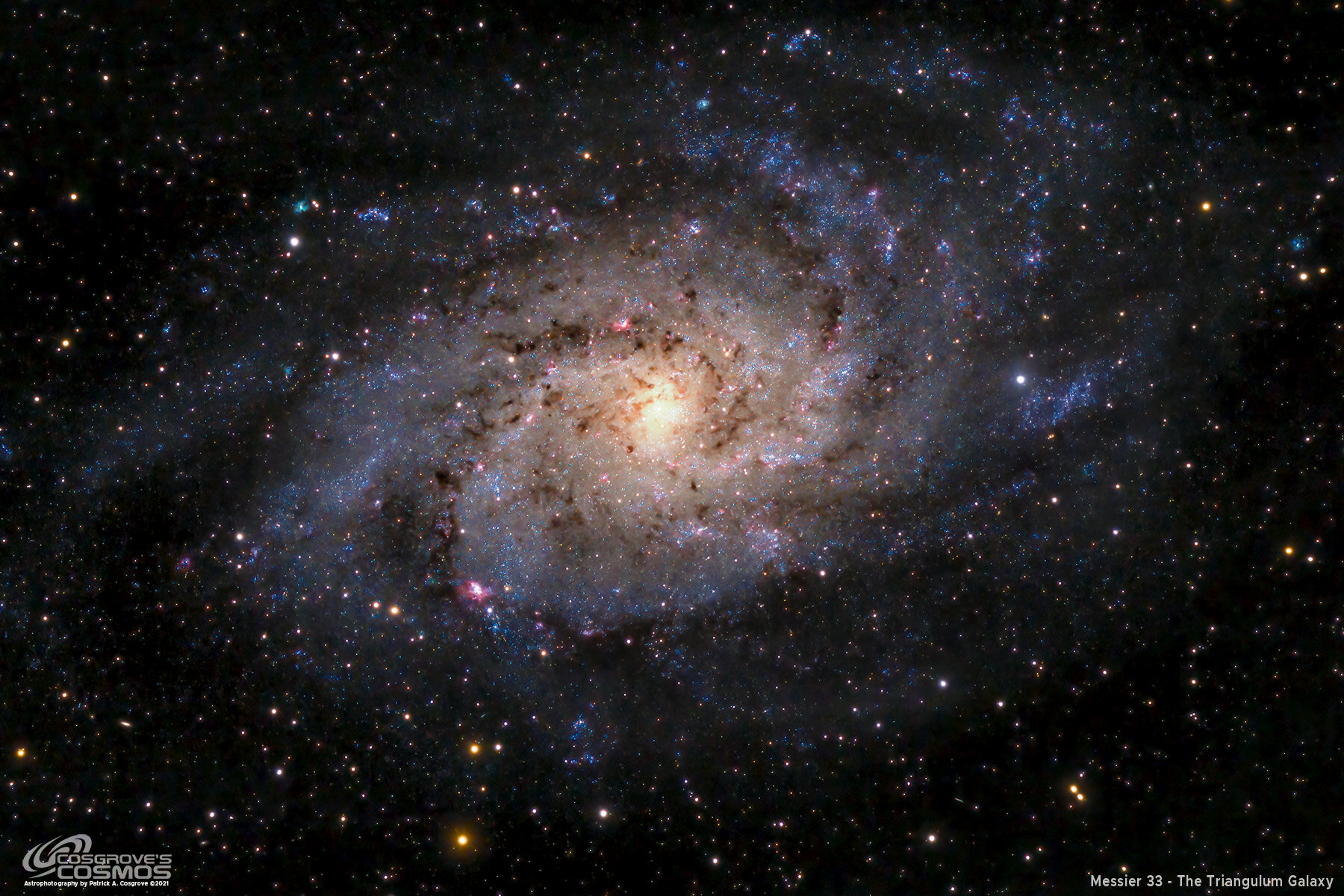
Messier 33 - The Triangulum Galaxy
M33, also known as NGC 598, or more commonly known as either the Triangulum Galaxy, is located 2.73 Million Light Years away in the constellation Triangulum. It is the third-largest member of the local group of galaxies which includes M31 the Andromeda Galaxy, and our own Milky Way. It is a spiral form galaxy - once of the first spiral galaxies identified as such back in 1850. It is one of the most distant objects that can be seen with the unaided eye.
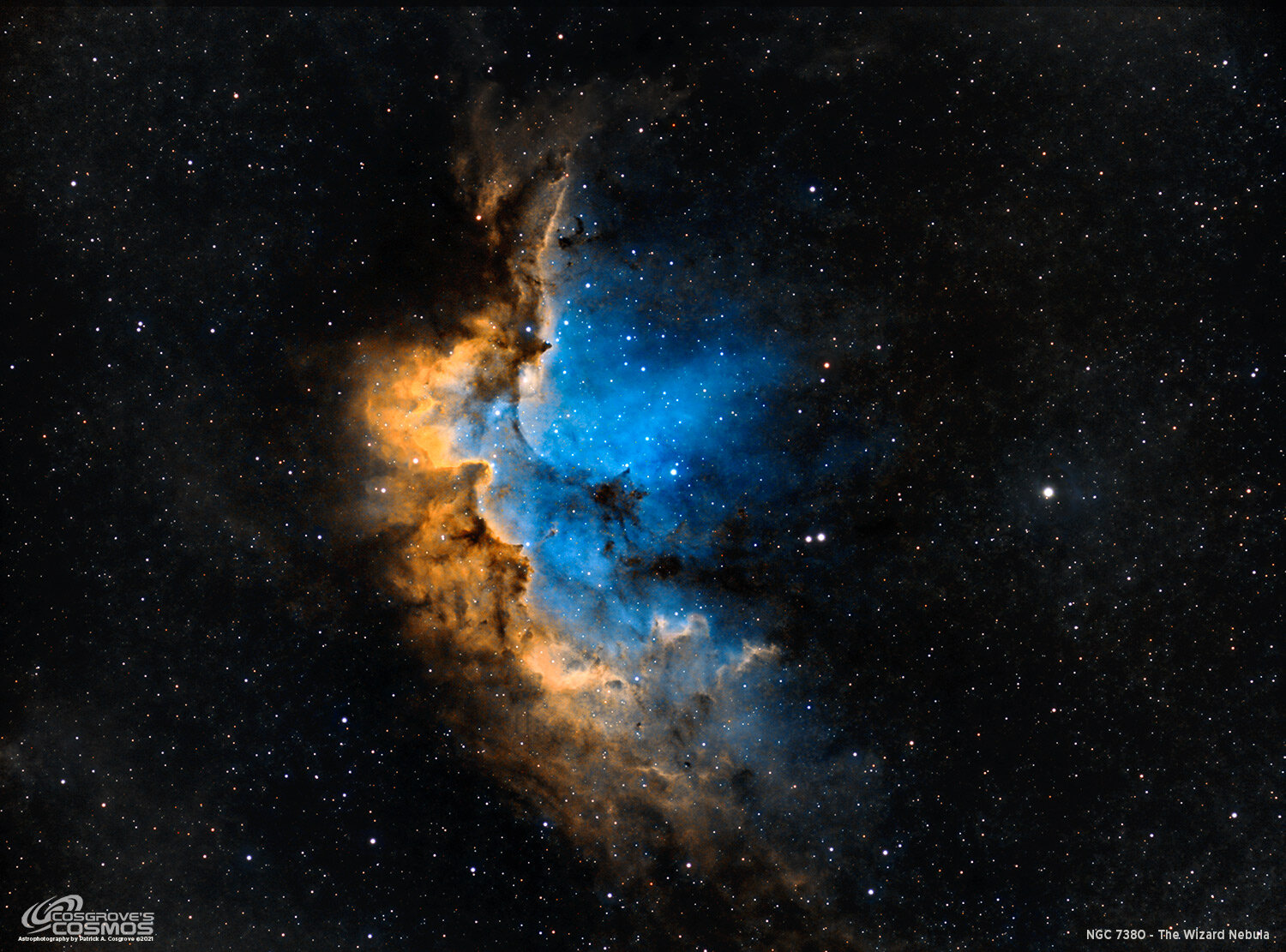
NGC 7380 - The Wizard Nebula - in Hubble Palette with Mixed Narrowband and RGB Filters
NGC 7380, Also known as the Wizard Nebula, the Flying Horse Nebula, and Sh2-142, is a gas, dust, and young star region. Located 7200 light-years away in the constellation Cepheus, the Wizard Nebula is tough to see visually but is a favorite imaging target. Most people have no trouble making out the Wizard - wearing a pointed hat, a well-defined nose, and a bright blue star for his eye. He also appears to be wearing a cloak and posing with his hands and fingers outstretched. FIrst complete Narrowband image attempted.
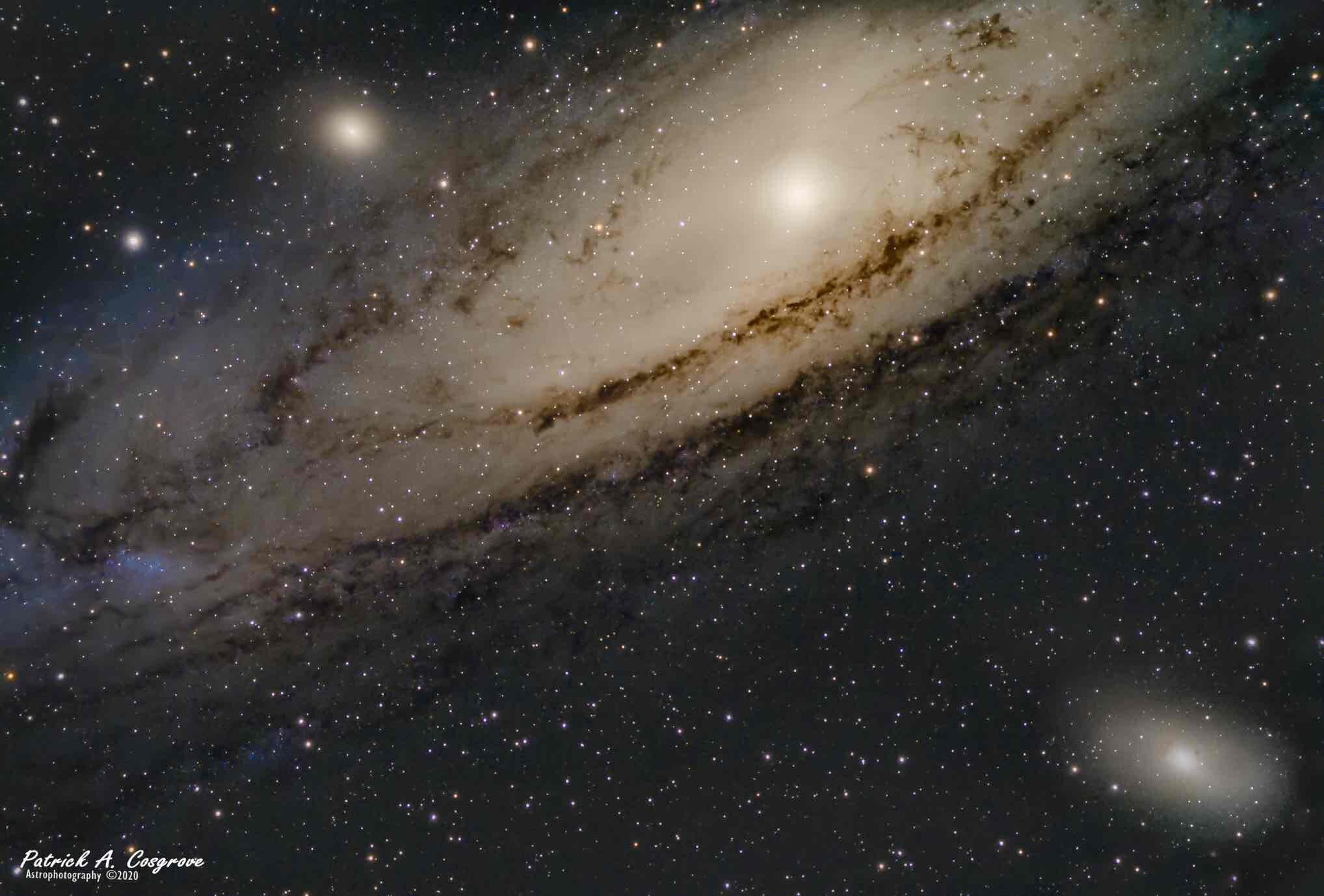
Messier 31 - The Andromeda Galaxy - with Neighbors M32 and M110
This is my second attempt at M31. With a larger focal length, I could not fit the whole galaxy in so I experimented with a framing that showed it’s two neighbors.
Messier 31 is also known as NGC 224 and the Andromeda Galaxy, or as the Andromeda Nebula before we knew what galaxies were. It can be seen by the naked eye in the constellation Andromeda (how appropriate!) and is our closest galactic neighbor located 2.5 Million light Years away. It is estimated that it contains abut one trillion stars - twice that of our own Milky Way.
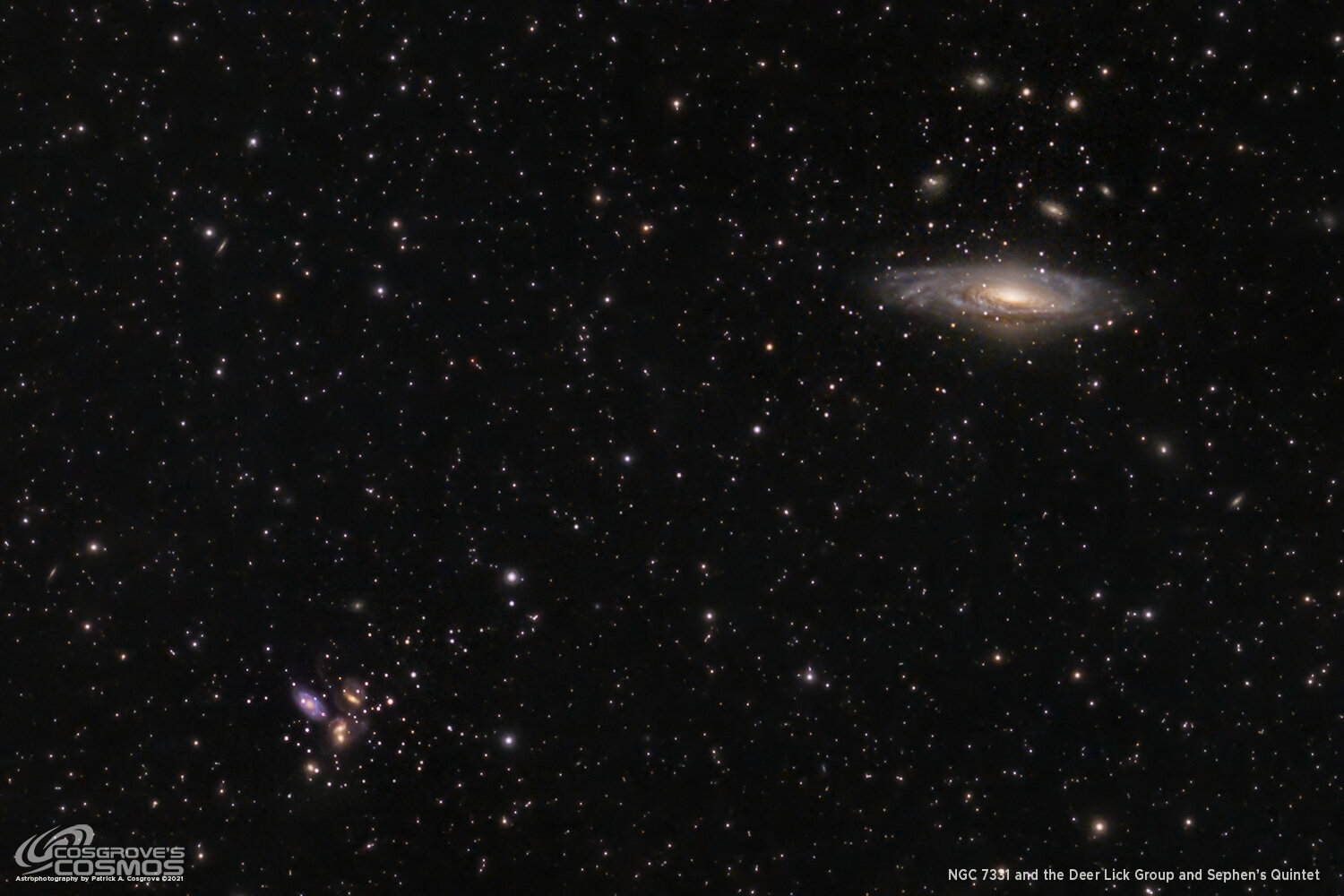
NGC 7331 and Two Galaxy Groups: The Deer Lick and Stephen's Quintet
Hot off the presses from my photo session last night: NGC 7331 and Two Galaxy Groups: The Deer Lick and Stephen's Quintet.
There are plenty of star clusters out there, but I was interested in shooting a cluster of Galaxies. Stephen's Quintet is high enough this time of year to clears my trees about midnight, so I started to plan on capturing that. I soon realized that I could get two for the price, as The Deer Lick Galaxy group would fit in the same frame if I composed the shot well.
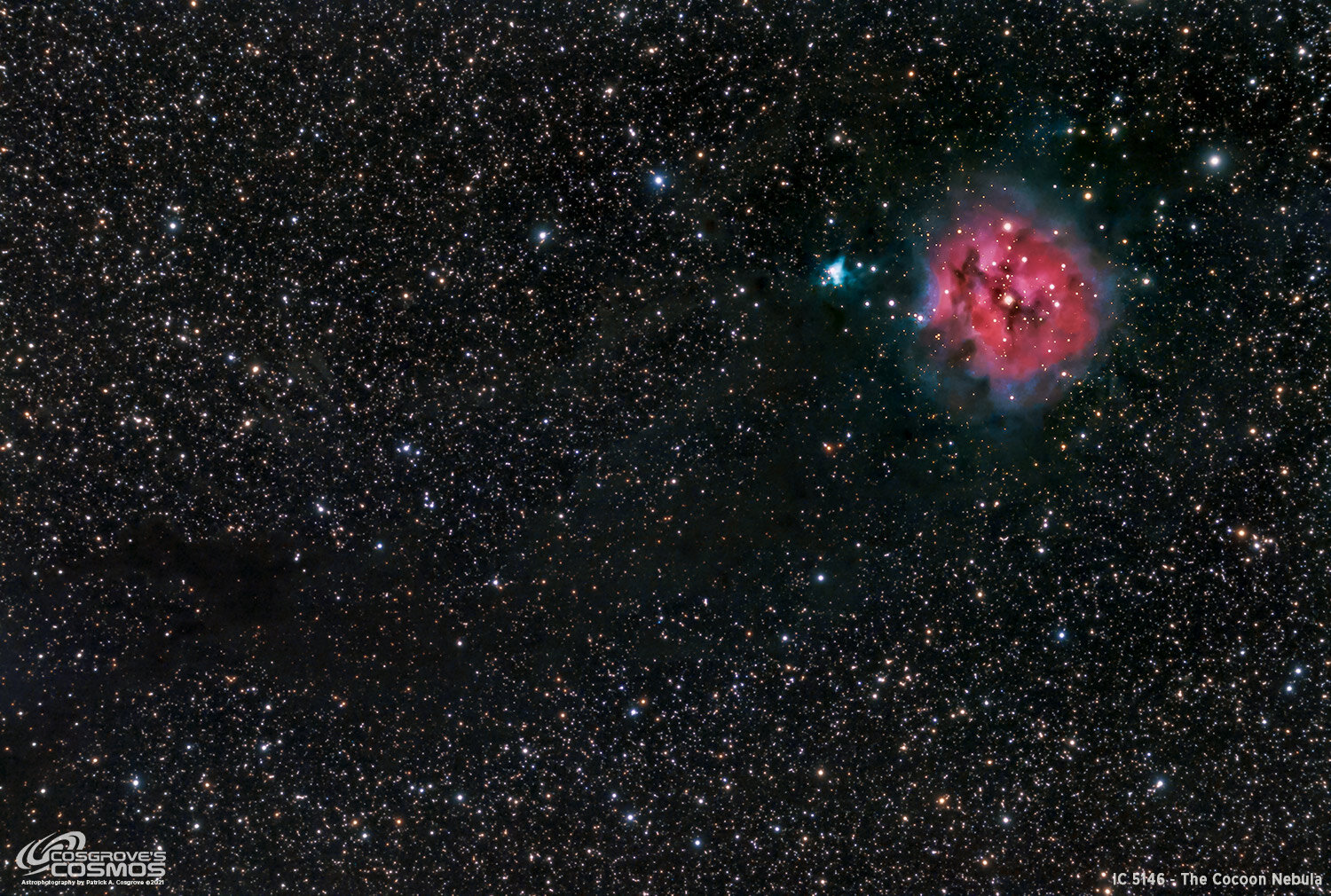
IC 5146 - The Cocoon Nebula
Located 4000 light-years from Earth, IC 5146 - better known as the Cocoon Nebula, is an area of both bright and dark nebulae in the constellation of Cygnus the Swan. The red portion is due to light shining from hydrogen emissions, while the blue portions of the nebula consist of dust reflecting the light young hot blue stars. At the core of the nebula is a bright star that only formed about 100,000 years ago. The shell of gas is about 15 light-years across. Also seen is a dark lane of dust that appears to project from the main nebula towards the west. This dark object is an obscuring cloud of dust known as Barnard 168. To me, it almost looks as if the dark cloud is emanating from and trailing the Crescent Nebula - I like the effect!

NGC 6888 - The Crescent Nebula in Bi-Color
NGC 6888, the Crescent Nebula. Found in the constellation Cygnus the Swan, The Crescent Nebula is an emission nebula located 5,000 light-years away. This was my very first attempt to image with narrowband filters - creating a Bi-Color image with Ha and OIII filters.
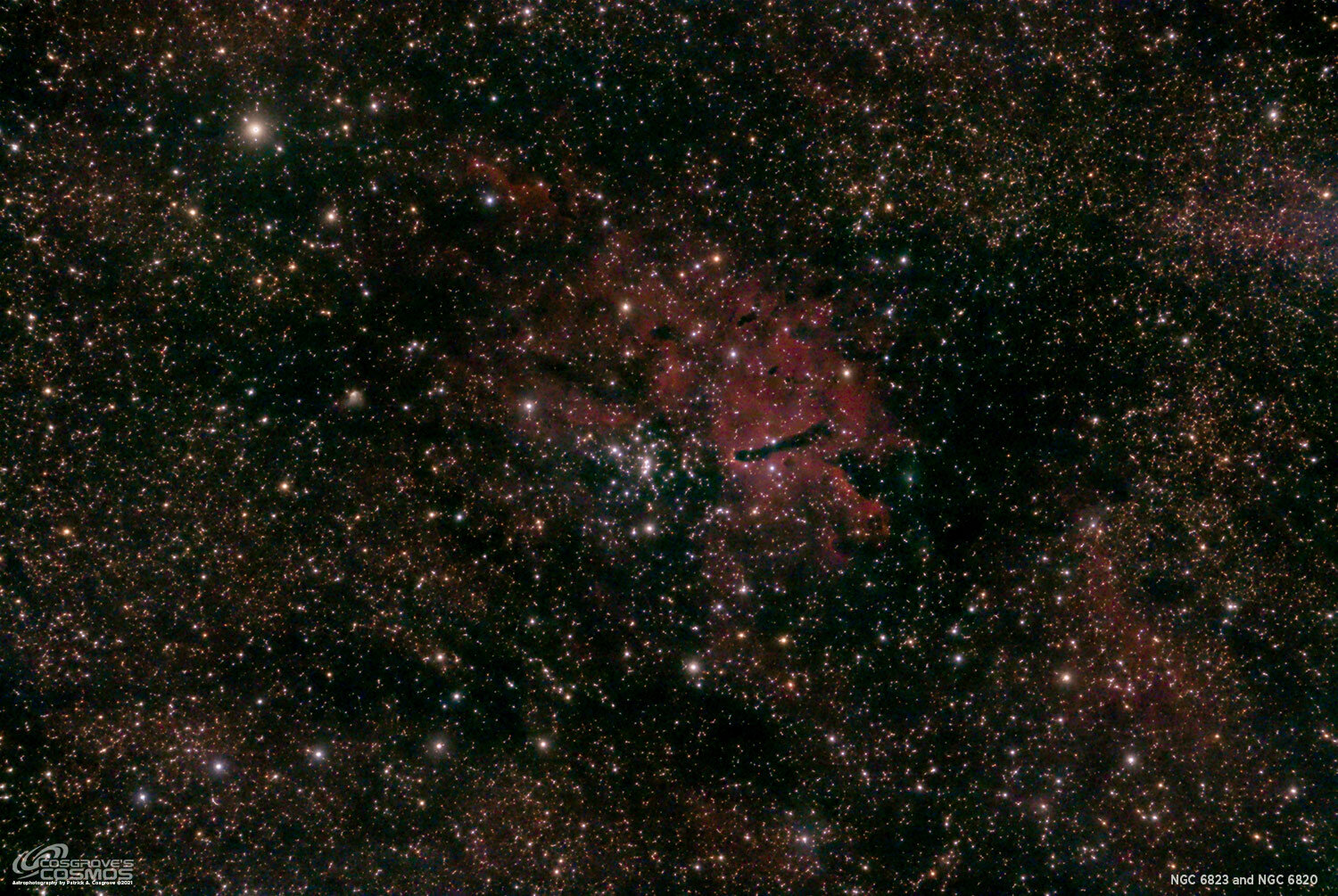
NGC 6823 & 6820 - An Open Cluster w/Nebula - Quite Possibly The Worst Image I Have Ever Taken!
Located in the constellation Vulpecula, NGC 6823 is a small open cluster of stars and associated reflection nebula, NGC 6820. The cluster is located about 6000 light-years away and measures about 50 light-years across.
This was one of the worst images I have ever done. Target not carefully chosen, no plan in place, poor shooting conditions. Just a real Bluh Image!
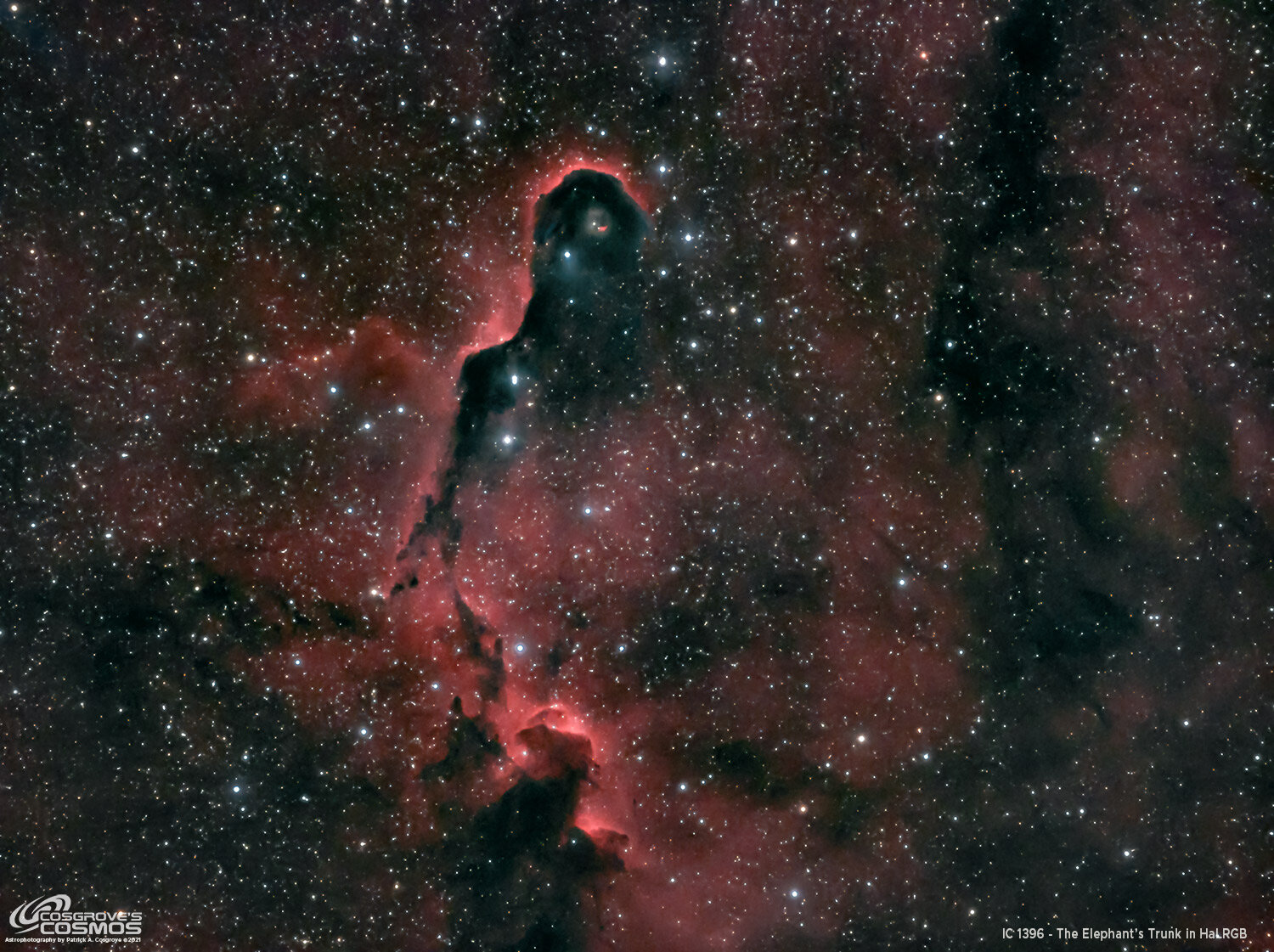
IC 1396 - The Elephant’s Trunk - Now with Added Ha
IC1396 - The Elephant's Trunk Nebula. This is a follow-up project. A few nights after the initial capture effort for this target, I went out and captured Ha data to integrate into the image. This made a massive improvement in the final image.
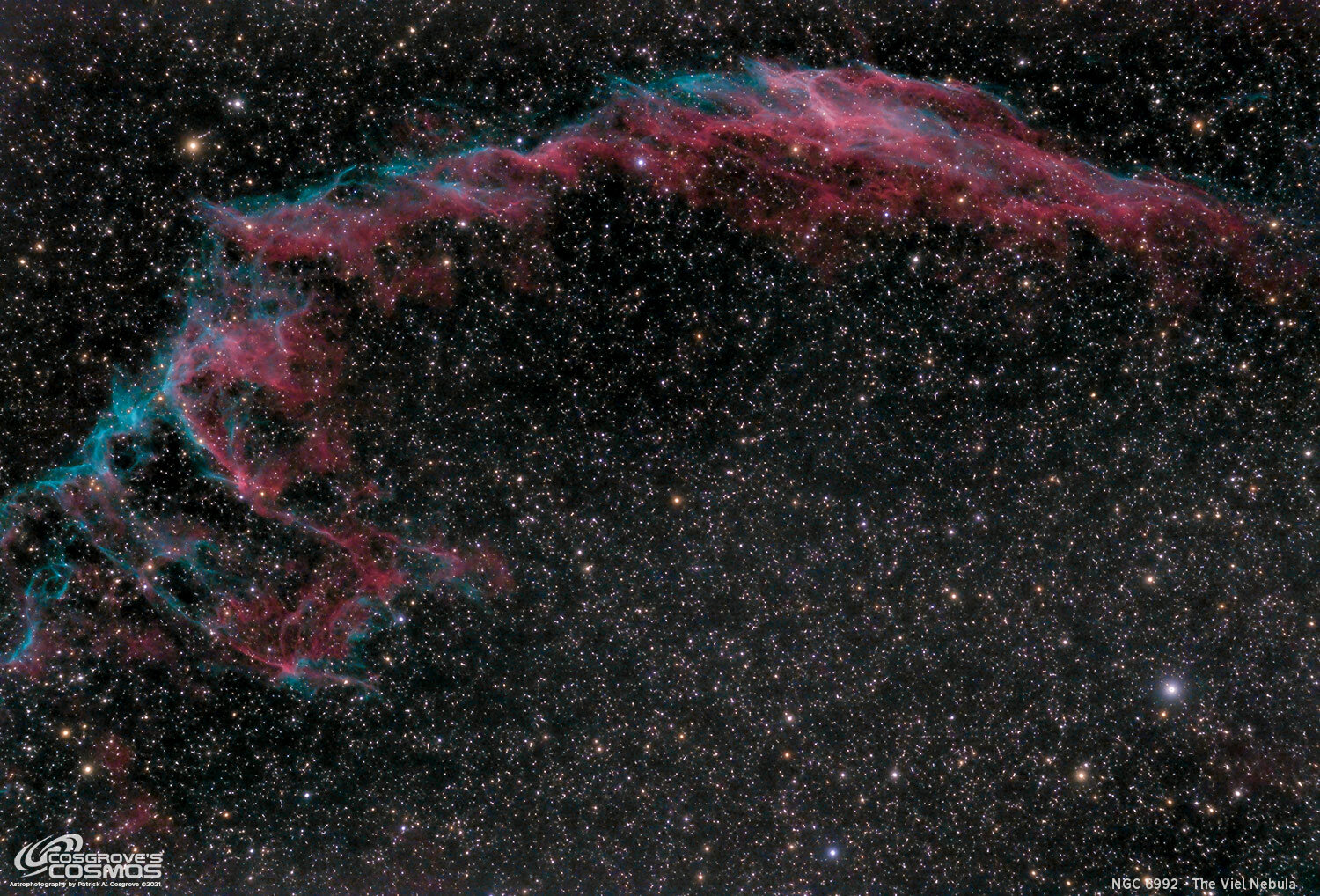
NGC 6992 - The Veil Nebula
NGC 6992, The Veil nebula, is a collection of hot gas and dust that forms a portion of a supernova remnant. Located 2400 light-years in the constellation of Cygnus, It forms one visible portion of the Cynus Loop - an expanding shockwave bubble from a star that went supernova between 10,000 and 20,000 years ago. The expanding gas from this explosion compressed Hydrogen, Oxygen, and Sodium, causing the formation of shockwaves and causing the colors you see here.
